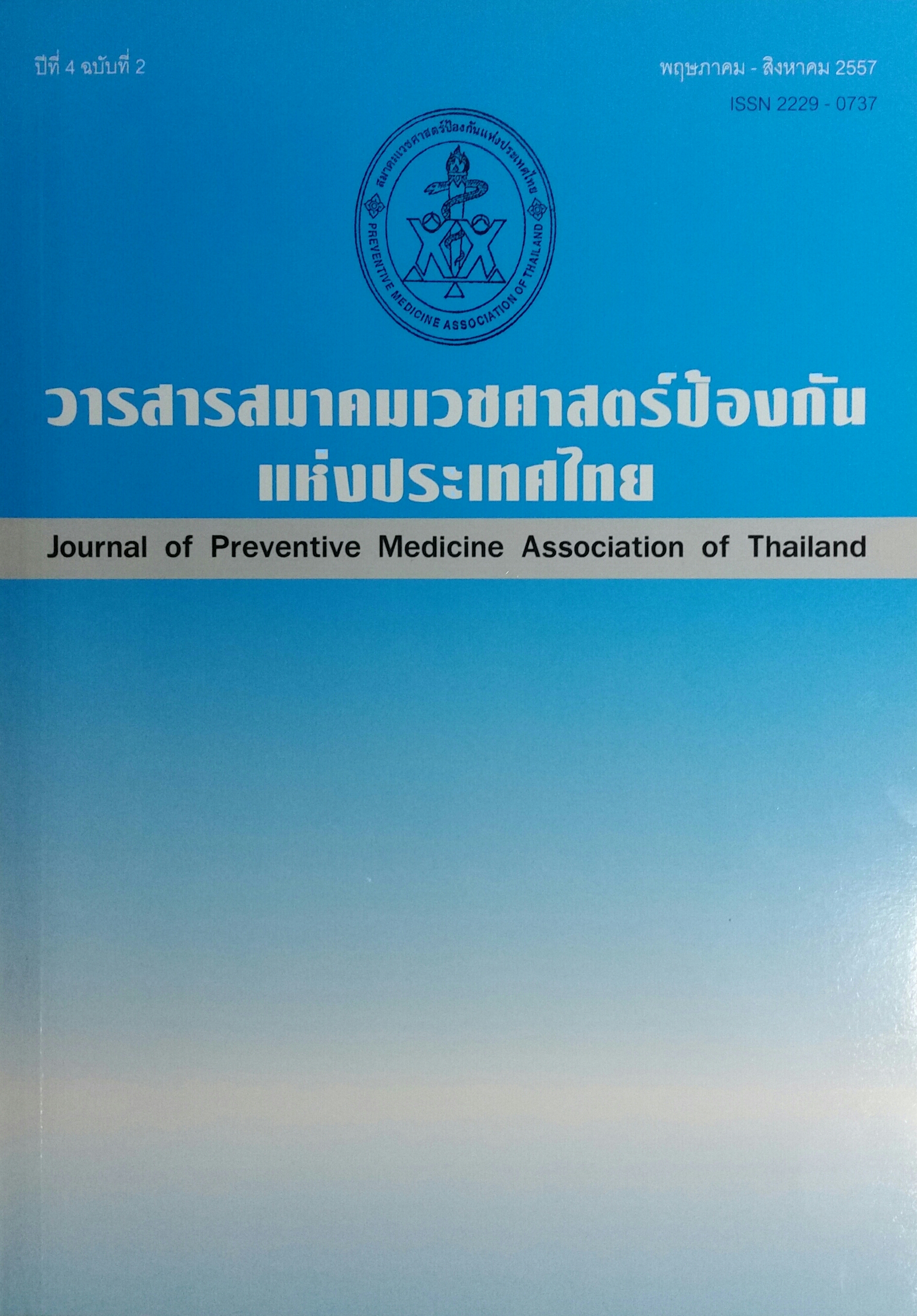Nutrition patient critical condition that use the respirator in Phra Nakhon Si Ayutthaya hospital
Abstract
This research has the objective to study nutrition in critical condition patient who uses the respirator. The sample is critical patient who used the respirator in Phra Nakhon Si Ayutthaya Hospital during the period from November 2012 to March 2013 for a total of 110 persons. Tools used in this research to assess nutrition condition include SGA, and to analyse data include percentage statistics and tributary statistics (Chi-square).
The research result finds that there are 57 females (51.82%), 53 males (48.18%), average age is 65 years old, and average weight is 56 kilograms. Out of 110 patients, 74 patients (67.89%) have normal body mass index value. In addition, there are 76 patients (69.09%) with lung infection, Albumin level in blood is 2.74 per deciliter, 15.5% of the sample has good nutritional status, 47.3% has potential malnutrition status, and 37.3% has malnutrition status. Factors such as gender, age and body mass index have no relations to nutritional status. However, patient’s weights and infections correlate with nutritional status. It is found that patients with weight greater than 51 kilograms and the patients who have no lung infections have improved nutritional status at significance level, p<0.05 and 0.03.
References
2. จุฬาภรณ์ รุ่งพิสุทธิพงษ์. Nutrition in Clinical Medicine. การประเมินภาวะโภชนาการ (Nutrition Assessment) กรุงเทพฯ:สำนักพิมพ์กรุงเทพเวชสาร; 2553.
3. รังสรรค์ ภูรยานนทชัย. การให้โภชนบำบัดในผู้ป่วยวิกฤต. สงขลานครินทร์เวชสาร 2549;24(5):425-43.
4. Barker A.L. Gout, BS., Crowe, TC. Hospital malnutrition:prevalence, Identification and impact on patients and the healthcare system. International Journal of Environment
Research and Public Health 2011;8(2):514-27.
5. Camila C. Japur, Jacqueline P. Monteiro, Júlio Sérgio Marchini, Rosa Wanda Diez Garcia, et al. A Can an adequate energy intake be able to reverse the negative nitrogen balance in me-clinically Ventilated critically ill patients. Journal of Critical Care 2010;25(3):445-50.
6. Rypkema G., Adang E., Dicke, H., Naber T., de Swart B., & Disselhorst, L., GolukeWillem G., et al. Cost-effectiveness of an interdisciplinary intervention in geriatric inpatients to prevent malnutrition. Journal of Nutrition Health and Aging 2004;8(2):122-7.
7. Detsky AS., McLaughlin JR., Baker JP., Johnston N., Whittaker S, Mendelson RA, Khursheed N. et al. What is subjective global assessmentof nutrition status. J Parenter
Enteral Nutr 1987;11(1):8-13.
8. Heyland, D.K., Dhaliwal, R., Jiang, X., Day, AG. Identifying critical ill patiens who benefit the most from nutrition therapy:The development and initial validation of a novel risk assessment tool. Critical Care, 2011;15(6):R268,1-11.
9. O, Leary-Kelley, CM., Puntillo, KA., Barr J., Stotts N., Douglas, MK. Nutritional adequacy in patients receiving mechanical ventilation who are fed enterally. Americal Journal of Critical Care, 2005;14(3):222-31.
10. Nieuwenhuizen, WF., Weenen H., Rigby P., Hetherington, MM. Older adult and patients in need of nutritional support:Review of current treatment options and factors influencing mutrition intake. Clinical Nutrition 2010;29(2):160-9.
Downloads
Published
How to Cite
Issue
Section
License
บทความที่ลงพิมพ์ในวารสารเวชศาสตร์ป้องกันแห่งประเทศไทย ถือเป็นผลงานวิชาการ งานวิจัย วิเคราะห์ วิจารณ์ เป็นความเห็นส่วนตัวของผู้นิพนธ์ กองบรรณาธิการไม่จำเป็นต้องเห็นด้วยเสมอไปและผู้นิพนธ์จะต้องรับผิดชอบต่อบทความของตนเอง






